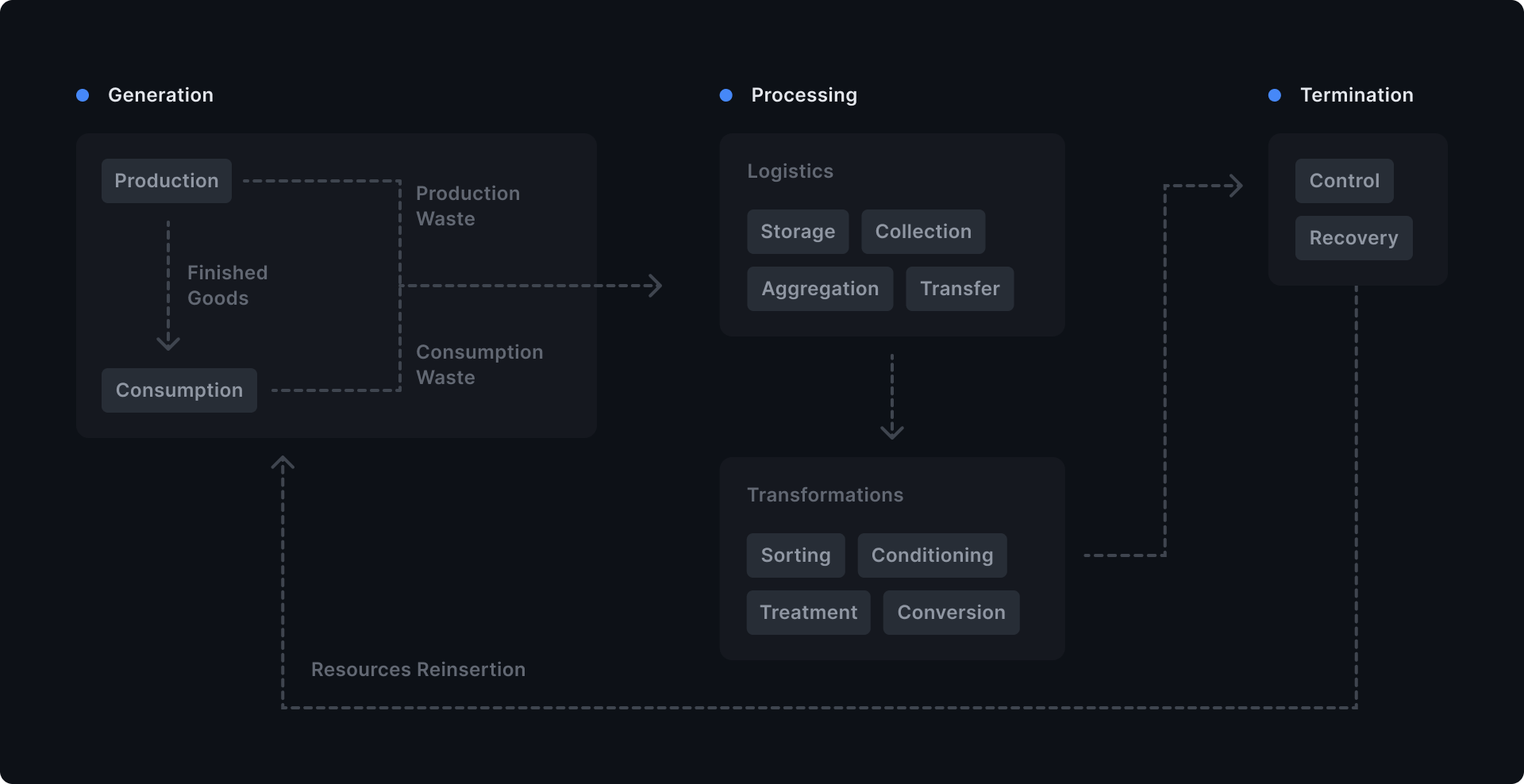The Waste Lifecycle
The waste lifecycle encompasses the entire spectrum of processes from the point at which materials are classified as waste, until they no longer apply to that designation. This analysis provides a complete perspective of waste dynamics from an operational perspective.

Waste Generation
Generation is the process where materials are deemed no longer useful in their current form and are discarded, marking their transition to waste. A crucial difference arises when considering waste typology from the value chain perspective:
| Value Chain Stage | Waste Classification |
|---|---|
| Production processes add value to produce or distribute goods or services. Their inputs are resources in the form of intermediate goods, and their outputs are other intermediate goods, finished products and services, and production waste. | Production Waste: waste generated during the manufacturing and distribution processes. |
| Consumption is the process by which an end consumer extracts value from goods and services to realize their utility. While the input is always a finished good or service, its output is always consumption waste, which is generated after a finished product is rendered useless of its primary function. | Consumption Waste: waste generated after a finished good or service is rendered useless of its primary function. |
Classifying Waste Generators
Waste generators are the establishments where waste is generated, whether from domestic, commercial, industrial or other activities.
- Large generators are large-scale establishments or operations producing significant amounts of waste, surpassing a threshold set by applicable regulation. They are usually industrial, institutional and commercial, and manage their waste by contracting private waste management organizations.
- Small generators are typically smaller establishments producing waste on a small scale, without surpassing a threshold set by applicable regulation. They are usually residential and commercial, and make use of public waste collection services, usually municipal.
Example: a household is a small generator, while a hospital is typically a large generator.
Waste Processing
The stage encompasses all intermediate activities required from waste generation to its termination. The complexity of activities within this phase is influenced by the nature of the waste, prevailing regulations, and marker dynamics. This phase is broadly characterized by two groups of processes:
-
Logistics: the movement of waste from its point of generation to sites where it can be effectively managed.
Storage Temporary containment of waste for economic or operational reasons. Collection Initial transportation of waste from its generation point. Aggregation Consolidation of waste from various sources into one location. Transfer Relocation of aggregated waste between sites. -
Transformations: the application of physical, chemical, or biological processes to modify the properties of waste, to add value or reduce risks.
Sorting Categorization of waste for subsequent processing. Conditioning Physical preparation of waste to enhance its commercial value. Conversion Modification of waste’s inherent properties to create new resources. Treatment Application of physical, chemical, or biological processes to reduce waste’s hazardous properties.
Waste Termination
Termination is the last stage of waste management, consisting in the end of its lifecycle by providing a solution to its related risks.
- Reinsertion: the act of reintroducing waste derived resources, either material or energetic, into productive value chains. This process aims to add value and compete with its outputs with virgin resources.
- Disposal: the definitive reduction of waste hazards under controlled conditions, to acceptable safety standards defined by applicable regulation. This process occurs where recovery is technically or economically unfeasible.